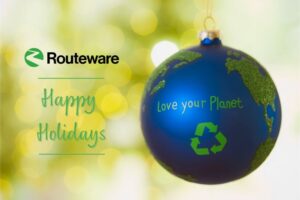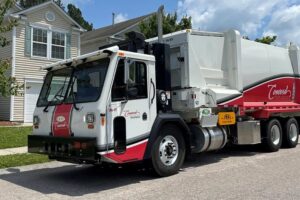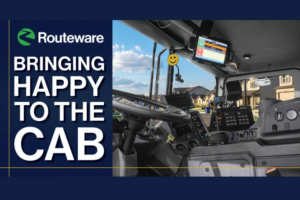Substantially reducing greenhouse gas emissions is vital to limiting global climate change, and it’s a goal for many municipalities and waste haulers with an environmental mission. According to the EPA, carbon dioxide (CO2) makes up 79 percent of greenhouse gases. Methane, which accounts for 11 percent, has been found to be a more potent greenhouse gas than CO2: Methane is 28 to 36 times more effective at trapping heat in the atmosphere.
The role of solid waste in global warming is not insignificant – the industry is responsible for more than 3 percent of greenhouse gas production annually. That means there are many opportunities to decrease emissions and meet critical sustainability goals, and many of these opportunities are those that your company can immediately work toward.
In an industry that involves visiting every address on the map with heavy trucks multiple times per month, along with load hauling and decomposition on a massive scale, only a concerted effort on multiple fronts will make a dent in greenhouse gas production.
As solid waste companies implement longer-term initiatives, like shifting vehicles away from fossil fuels and capturing landfill emissions, digital waste management solutions can be one of the fastest routes to meet sustainability goals.
Three ways to decrease greenhouse gases with technology
1. Route optimization software helps with savings, speed, and efficiency.
Route optimization software can have a tangible impact on fuel use and vehicle wear-and-tear. It’s the fastest way to plan more efficient waste collection routes – enabling you to implement new routes that reduce costs and emissions while balancing human resources. Digital route planning can be done in a fraction of the time compared to manual processes. This means you can re-balance routes more frequently and deliver them to drivers much faster. Even without impacting the actual truck in use, you’re able to significantly reduce truck emissions by making better use of the ones you have on the road, and potentially using fewer of them overall.
Municipalities using digital route optimization software can save an average of 15 percent on costs. This financial return can then be reinvested into longer-term sustainability initiatives like converting to a zero-carbon fleet. As you convert your fleet, digital route optimization software allows your team to regularly review collection routes to take into account changes in vehicle type, size, and capacity.
2. Instantaneous communication between back office and in-cab crews saves miles.
On-board computers connecting to the back office provide instantaneous communications to ensure that costly, one-off bin collection scenarios – like going back to collect a missed bin or non-collection of a contaminated bin – are minimized or resolved as efficiently as possible.
Digital in-cab communications allow supervisors to notify the nearest crew immediately so a problem can be dealt with quickly and without unnecessary miles or a costly return visit. On-board computers dramatically improves customer service by providing residents with up-to-the-minute route information, reducing case resolution times.
3. Empower residents to recycle right — and reduce landfill gases.
Diverting waste from landfills and managing waste organics provides opportunities to reduce costs as well as harmful greenhouse gases. According to the EPA, 63 percent of yard trimmings and about 4 percent of wasted food were composted in 2018. Increased composting has a direct impact on gases produced from landfills.
When residents are confused about what goes where, recycling participation tends to be lower and contamination increases. Many municipalities are using digital tools for recycling educationto to educate residents on how to recycle better, so the entire community can get involved in accomplishing sustainability goals. With a convenient mobile app, residents can look up a specific item and immediately determine where to toss it.
Data collected from digital tools for recycling communication is also being used to help municipalities identify repeated waste contamination issues, both geographically and by item, and implement targeted communications programs.
How Routeware Helps
Routeware provides proven technology solutions to over 1,000 municipalities and haulers in the US and Canada, helping them achieve operational, financial and sustainability goals.
Our technology provides municipalities and haulers with detailed analytics to help them plan and quantify greenhouse gas reduction strategies and cost saving targets. They also help to identify and implement further solutions where additional changes would be beneficial.
Learn more. If reducing your organization’s carbon footprint is on your roadmap, we have the tools and technology to help. Get Started Today!





